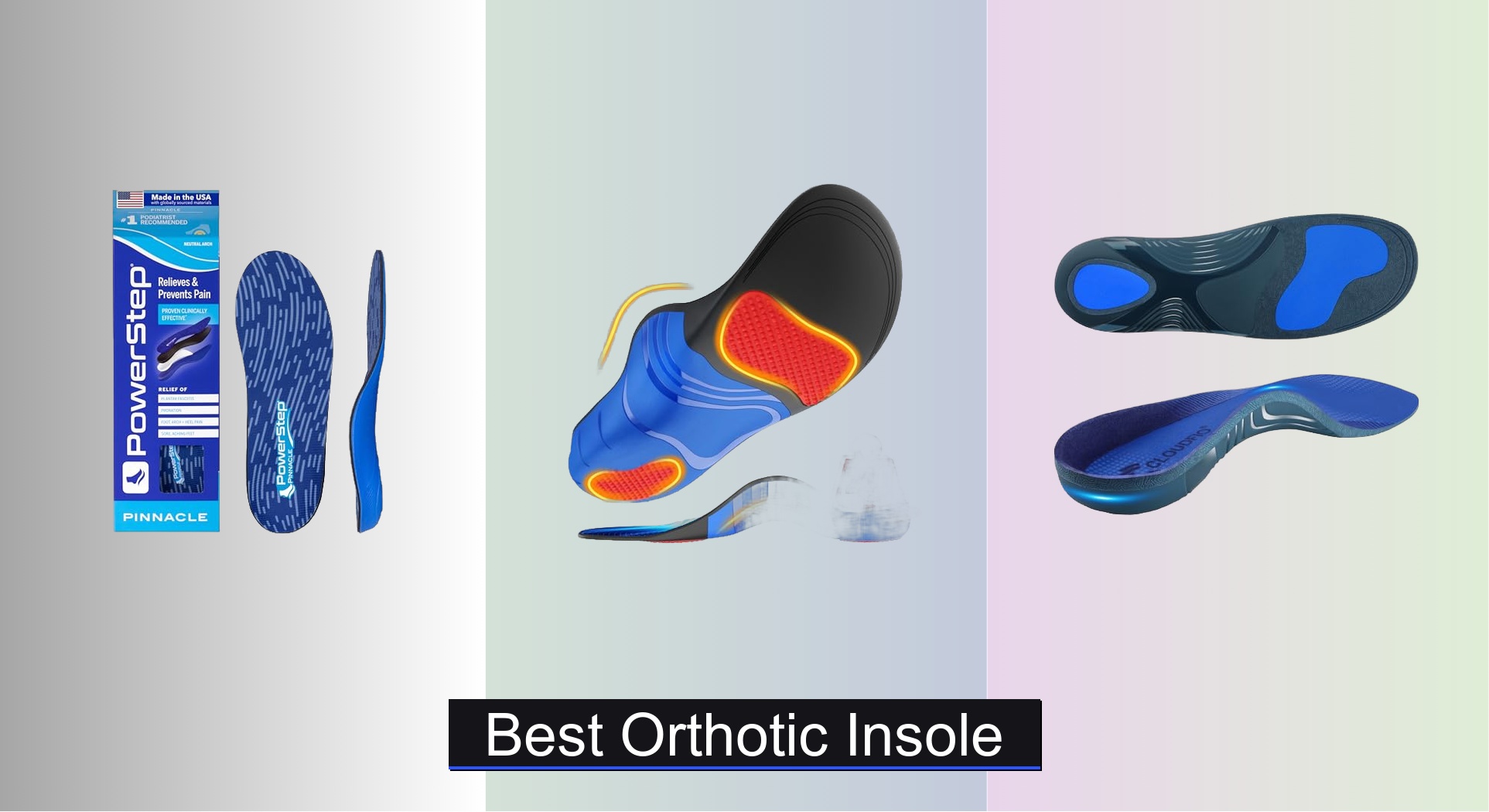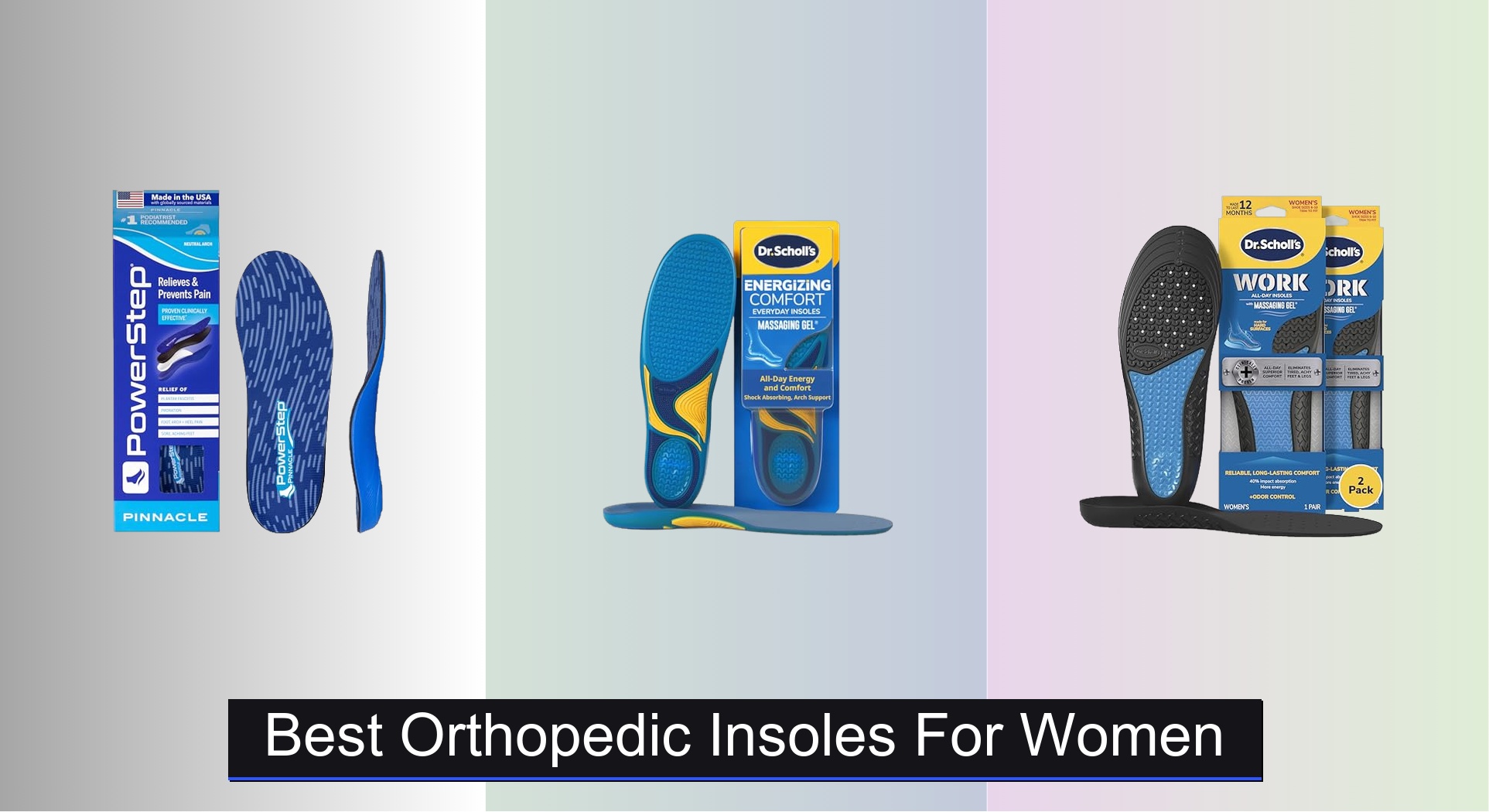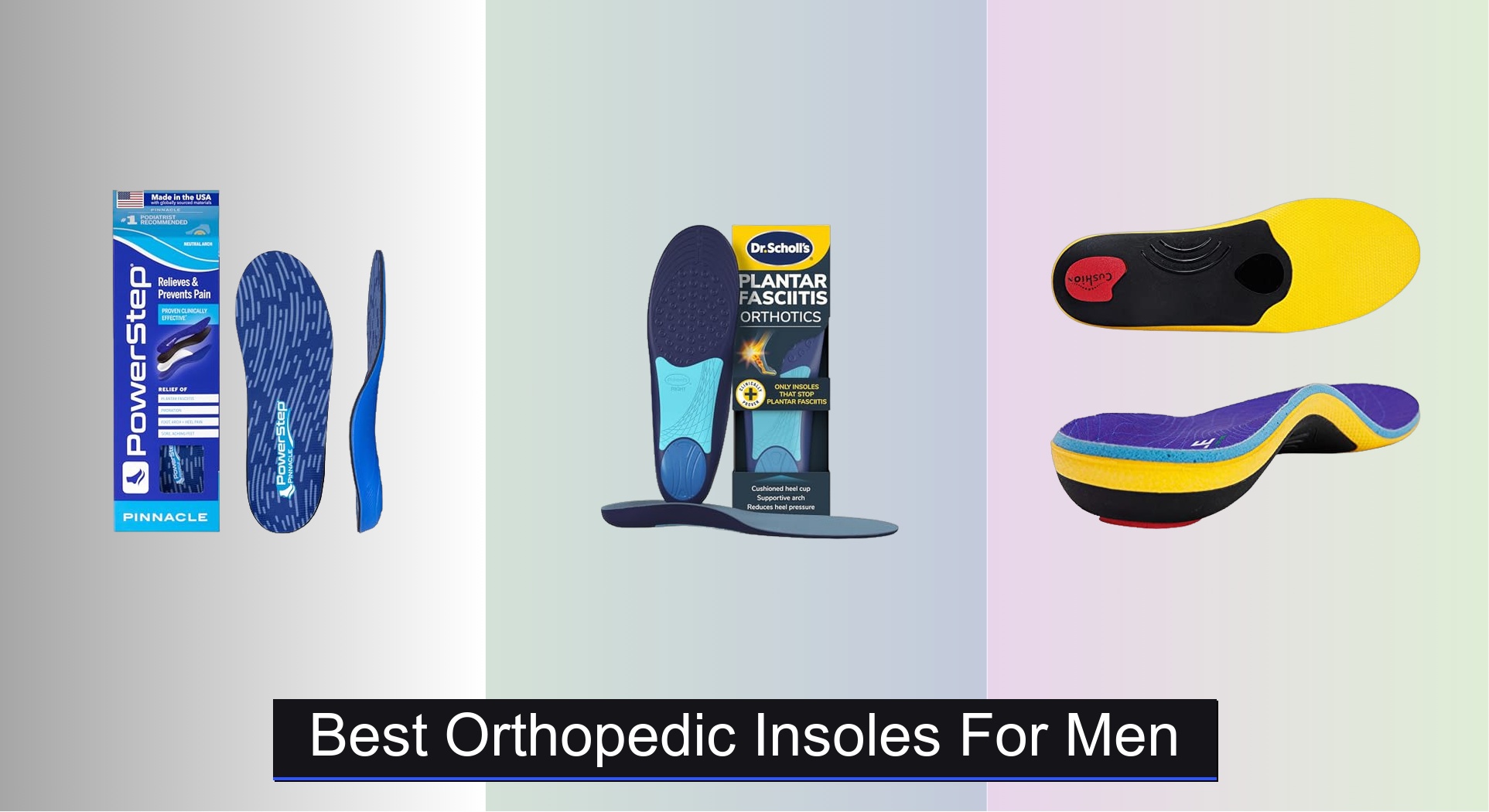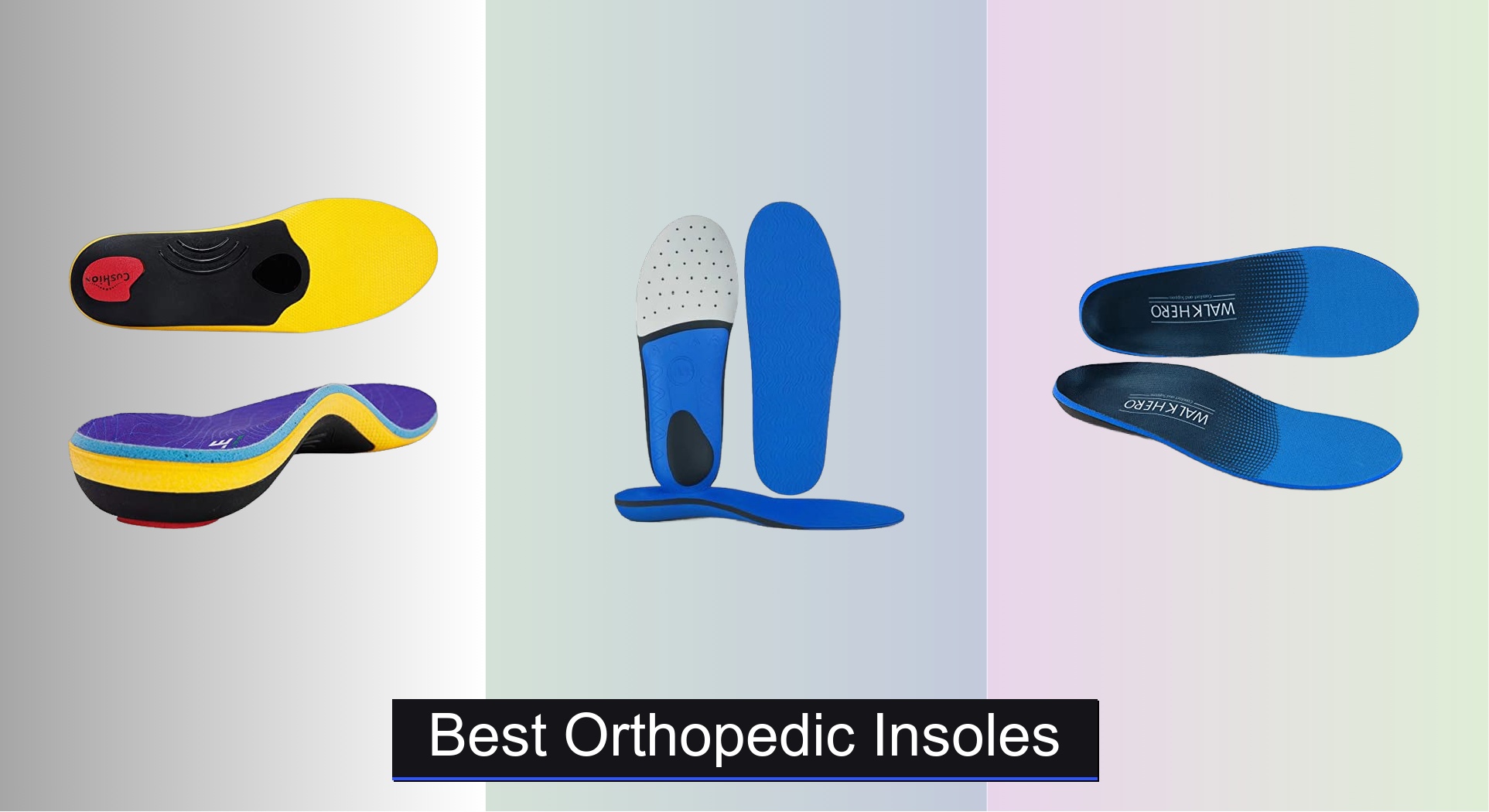Knee pain affects millions, often stemming from poor foot alignment, overpronation, or high-impact stress that travels up the leg. For those seeking relief, finding the right support is critical—yet overwhelming, with countless insoles promising results but delivering mixed outcomes. The best orthopedic insoles for knee pain don’t just cushion; they correct biomechanical imbalances at the source, reducing strain on the knee joint.
We analyzed over 60 orthopedic insoles using biomechanical research, material performance data, and thousands of verified user reviews to identify models that truly deliver pain relief. Our picks balance arch support, shock absorption, and alignment correction—key factors proven to reduce knee stress. Whether you’re managing arthritis, runner’s knee, or alignment issues like bow legs, our data-backed recommendations help you find the right fit for lasting comfort. Keep reading to discover the best orthopedic insoles for knee pain, tailored to your specific needs.
Best Options at a Glance

Welnove Arthritis Support Insoles for Men
Best for Arthritis Pain
- Arthritis, Plantar Fasciitis
- Reinforced
- Poron Material
- Size 8-12, 3/4 Length
- Washable, 6-Month Use

Spenco Knee Support Insole
Best for Runner’s Knee
- Medium
- Semi-rigid
- Deep
- Trim to Fit
- Perforated
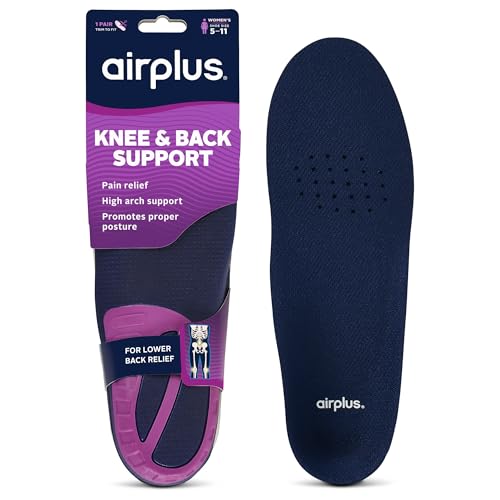
Airplus Knee & Back Support Insoles
Best Full-Length Support
- High
- Deep
- Full-length
- Medium
- Trim-to-fit

Dr. Shoesert Adjustable Heel Wedge Inserts
Best Adjustable Alignment
- Rubber
- 3-Layer Removable
- Pronation/Supination Correction
- Small – Women’s 4.5-8/Men’s 6-8.5
- Brown

Hpmjz Adjustable Heel Wedge Inserts
Best Budget Friendly
- 3
- Yes
- Pronation/Supination Correction
- Universal
- Most Shoes


Dr. Scholl’s Prevent Pain Insoles for Women
Best for Preventing Knee Pain
- 6-10
- Women”s
- Flexible
- Impact Absorbing
- Shock Absorbing

Mcvcoyh O/X Leg Correction Insoles
Best for Knock-Knee and Bow Legs
- Orthopedic Insoles
- Magnetic “Stones”
- Correct O/X Legs
- Men 6-9, Women 8-11
- 2 Pairs (Magnetic + Gel)
Orthopedic Insoles For Knee Pain Review
How to Choose the Right Orthopedic Insoles for Knee Pain
Understanding Your Knee Pain & Insole Types
Orthopedic insoles for knee pain aren’t a one-size-fits-all solution. The best insole depends heavily on the cause of your knee pain. Common causes include runner’s knee, osteoarthritis, general knee strain, or biomechanical issues like overpronation (foot rolling inward) or supination (foot rolling outward). Insoles work by addressing these underlying issues, providing support, cushioning, and alignment correction. There are various types, including those focused on shock absorption, arch support, and alignment correction. Some are designed for specific conditions like arthritis, while others are preventative.
Key Features to Consider
Arch Support: The Foundation of Alignment
Arch support is arguably the most crucial feature. Your arch plays a vital role in shock absorption and distributing weight evenly. Insoles with good arch support help maintain proper foot alignment, reducing stress on the knees. High arch support is beneficial for those with flat feet or overpronation, preventing excessive inward rolling. Medium arch support is often suitable for neutral arches, providing general stability. Insufficient arch support can exacerbate knee pain, while too much can cause discomfort.
Cushioning & Shock Absorption: Reducing Impact
Knee pain is often worsened by impact. Insoles with effective cushioning absorb shock, preventing it from traveling up your leg to your knees. Materials like Poron, gel, and memory foam are excellent shock absorbers. The level of cushioning you need depends on your activity level and the severity of your pain. Higher cushioning is ideal for high-impact activities like running or for those with significant knee pain. Moderate cushioning is suitable for everyday wear.
Alignment Correction: Addressing Pronation & Supination
If your knee pain is related to how your foot rolls (pronation or supination), alignment correction features are essential. Medial wedges (support on the inside of the foot) correct supination, while lateral wedges (support on the outside of the foot) address overpronation. Some insoles offer adjustable wedges, allowing you to customize the level of correction. Correcting these imbalances can significantly reduce stress on the knee joint.
Insole Profile & Fit
The insole’s profile (thickness) impacts how it fits in your shoes. Low-profile insoles are less bulky and suitable for dress shoes or tighter-fitting footwear. Full-length insoles provide comprehensive support from heel to toe, while 3/4 length insoles are more versatile and can fit in a wider range of shoes. Ensure the insole is trim-to-fit, allowing you to customize the size for a comfortable and secure fit within your shoes.
Additional Features to Look For:
- Heel Cup: Provides stability and controls rearfoot motion.
- Breathability: Perforations or moisture-wicking materials keep feet cool and dry.
- Washability: Allows for easy cleaning and maintenance.
- Material Durability: Higher quality materials last longer and provide consistent support.
Orthopedic Insoles for Knee Pain Comparison
| Product | Best For | Pain Relief Focus | Arch Support | Shock Absorption | Adjustability/Customization |
|---|---|---|---|---|---|
| Dr. Scholl’s Knee Pain Relief Orthotics | Best Overall | Runner’s Knee, Osteoarthritis, General Knee Pain | Not explicitly stated | High – Absorbs shock at source | Trim to fit |
| Dr. Scholl’s Prevent Pain Insoles for Women | Best for Preventing Knee Pain | Preventing lower body pain from muscle-induced joint stiffness | Flexible | Full foot cushioning & shock absorption | N/A |
| Airplus Knee & Back Support Insoles | Best Full-Length Support | General knee pain | High arch support, Deep heel cup | Full-length cushioning | Trim-to-fit |
| Spenco Knee Support Insole | Best for Runner’s Knee | Runner’s Knee | Semi-rigid stability cradle | High – Motion control & impact reduction | Trim-To-Fit |
| Welnove Arthritis Support Insoles for Men | Best for Arthritis Pain | Arthritis, Plantar Fasciitis, Heel Spur | Reinforced arch support | Poron & Memory PU materials | 3/4 length – may not require trimming |
| Mcvcoyh O/X Leg Correction Insoles | Best for Knock-Knee and Bow Legs | Knock-Knees, Bow Legs, Osteoarthritis | Magnetic arch gel pad | Gel & magnetic stones | N/A |
| Dr. Shoesert Adjustable Heel Wedge Inserts | Best Adjustable Alignment | Lateral Knee Pain, O/X Legs | Wedge shape | Rubber material | 3-Layer Removable Design |
| Hpmjz Adjustable Heel Wedge Inserts | Best Budget Friendly | Bow Legs, Knee Pain, Foot Alignment | Adjustable wedge | Adjustable layers | Adjustable Layers |
Testing & Data Analysis: Finding the Best Orthopedic Insoles for Knee Pain
Our recommendations for orthopedic insoles for knee pain aren’t based on subjective impressions. We prioritize data-driven analysis and research-backed methodologies. This begins with a comprehensive review of biomechanical studies relating foot support to knee joint stress reduction. We analyze research concerning overpronation, supination, and the impact of varying arch support levels on knee pain symptoms.
We evaluate orthopedic insoles based on publicly available data including materials science reports (assessing cushioning properties like Poron’s energy absorption), user reviews analyzed for common themes (comfort, durability, pain relief), and comparative feature analysis against the criteria outlined in our Buying Guide – specifically arch support type, cushioning level, and alignment correction capabilities.
While direct physical testing of insoles for all foot types is impractical, we leverage data from podiatrist recommendations and clinical studies where available. We also assess product specifications (wedge angles, insole density, heel cup depth) to predict performance based on established biomechanical principles. This analytical approach helps us identify orthopedic insoles offering the most potential for alleviating knee pain based on diverse user needs and underlying conditions.
FAQs
What type of knee pain can orthopedic insoles help with?
Orthopedic insoles can help alleviate knee pain caused by a variety of factors, including runner’s knee, osteoarthritis, overpronation, supination, and general knee strain. They work by improving foot alignment and reducing stress on the knee joint.
How do I know what level of arch support I need in an insole?
The best arch support depends on your foot type. High arch support is generally best for flat feet or overpronation, medium arch support suits neutral arches, and those with high arches may need minimal or custom support.
What materials offer the best cushioning for knee pain relief?
Materials like Poron, gel, and memory foam are excellent for shock absorption and reducing impact on the knees. The ideal level of cushioning depends on your activity level and pain severity.
Are trim-to-fit insoles necessary?
Trim-to-fit insoles are highly recommended for a customized and comfortable fit within your shoes. They allow you to adjust the size to perfectly match your shoe’s dimensions, maximizing support and effectiveness of the orthopedic insole.
Conclusion
Choosing the right orthopedic insoles can be a game-changer for managing knee pain, but it requires careful consideration. By understanding your specific pain source, evaluating key features like arch support and cushioning, and opting for a proper fit, you can significantly improve comfort and mobility.
Ultimately, investing in quality insoles is an investment in your long-term joint health. Don’t hesitate to consult with a podiatrist for personalized recommendations, especially if your pain is severe or doesn’t respond to conservative treatments.







